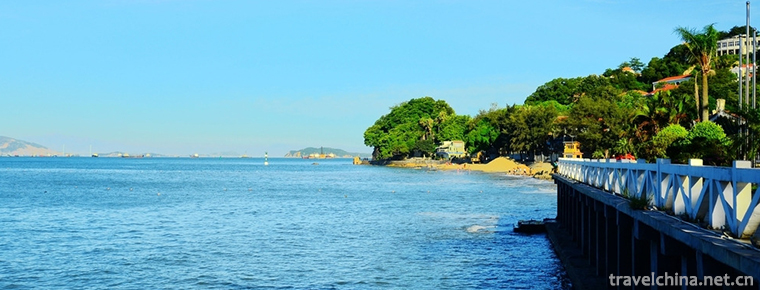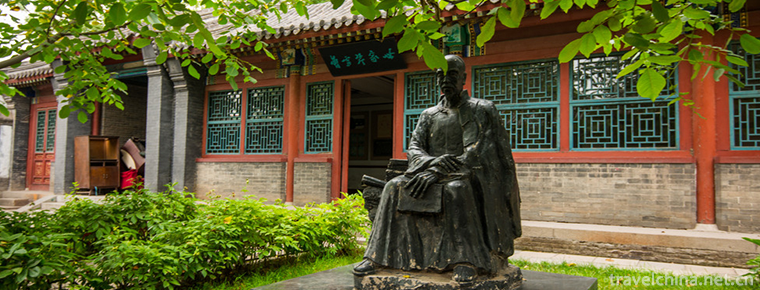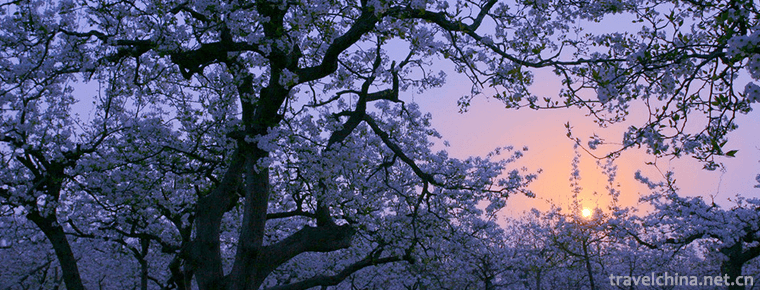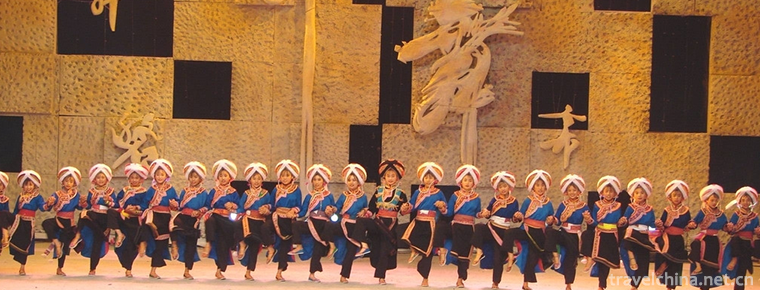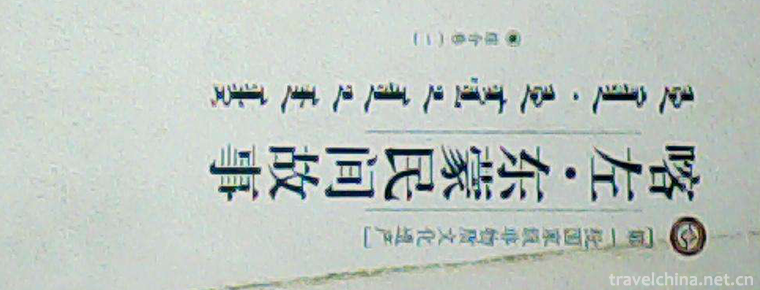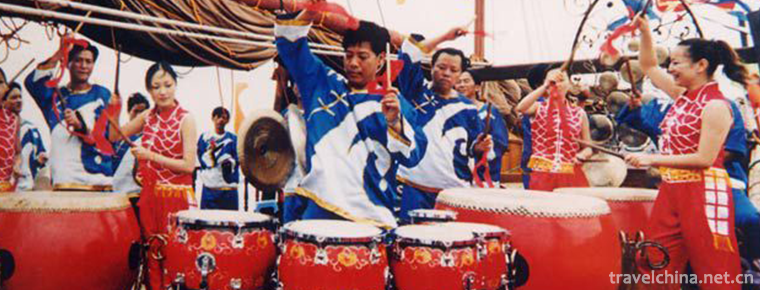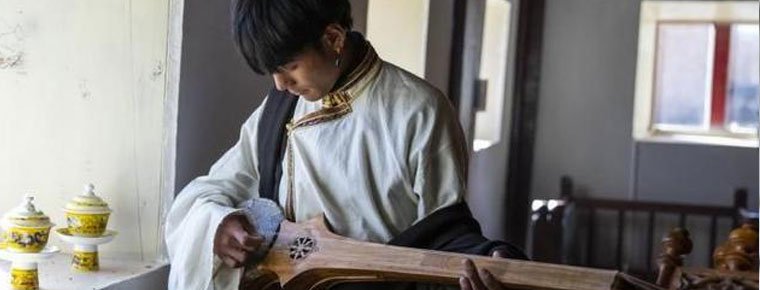Jiaying Scenic Spot
Jiaying Scenic Spot
Jiayingguan, commonly known as the Longwang Temple of the Yellow River, is located in Jiayingguan Township, Wuzhong County, Jiaozuo City, Henan Province, China. It was built in the first year of Yongzheng Qing Dynasty (1723). It is 35 km from Jiaozuo City. Its geographical coordinates are 35 02 15.89 North latitude, 113 30 12.48 East longitude, covering an area of 9.3 square kilometers .
Jiayingguan's main scenic spots include imperial stele pavilion, Yan Dian, Dawang Dian, Gongyi Pavilion and Shun Wang Pavilion, which are divided into south, north and east-west courtyards. They are the Qing Dynasty building complex which imitates the Imperial Palace and integrates officials, temples and government.
Jiayingguan is a national AAAA-level tourist attraction , and is the fifth batch of national key cultural relics protection units.
Historical Evolution
From the 60th year of Kangxi (1721) to the first year of Yongzheng (1723) in the Qing Dynasty, there were five breaches of the Yellow River in Wuzhong, and Yongzheng, the Kangxi faction, was personally at the breach .
In the first year of Yongzheng (1723), after Yongzheng's succession, Zheng Zengyun, the deputy governor of the river course and the servant of the military department, was ordered to reinforce the dyke and inscribe it with the title of "Imperial Dam". Yongzheng was sacrificed to the river god and admired the governors of river regulation in successive dynasties, and the imperial edict began to build Jiaying Guan .
In the fifth year of Yongzheng (1727), Jiayingguan was completed.
In 1950, Jiayingguan West Court established Fu Zuoyi and the former Soviet Union expert headquarters for the control of the Yellow River, developed the water resources of the Yellow River and built the People's Victory Canal.
In March 1951, the People's Victory Canal began construction.
In April 1952, the People's Victory Canal held the opening ceremony; in June of the same year, irrigation of farmland; on October 31, Mao Zedong visited .
Architectural pattern
Jiaying Guan is located in Jiaying Guan Township, Wuzhu County, Jiaozuo City, Henan Province, covering an area of 9.3 square kilometers, divided into south, north and east-west courtyards; the north courtyard is a building group for worshipping river gods and patrolling River palaces; the central axis of the north and South are mountain gates, imperial stele pavilion, Yan Temple, Royal palace, Gongyi pavilion, Shun Wang Pavilion; symmetrical on both sides are Yemen, imperial horse pavilion, bell, drum tower, changing clothes palace, Longwang palace, Fengyu god. Palace; East-West courtyard for Hetai, Daotai Ya Department; South courtyard original theatre buildings, archways; Guanxi original Chen Gong Temple; Jiaying Guan each hall ceiling has 65 circular paintings of dragon and phoenix, is the pre-Qing Manchu artistic style (the Forbidden City dragon and Phoenix picture is a combination of Manchu and Han, Jiaying Guan dragon and Phoenix picture is a clear and uniform Manchu cultural style), the ceiling material is sandalwood, no spider web, not sticky. Dust, birds and insects do not enter, so also known as "dust-free hall", the hall for the heavy eaves Xieshan corridor building .
Major attractions
Shanmen
Shanmen, located at the southern end of Jiayingguan, is a single eaves hilltop, covered with blue glazed tiles, under the eaves are five heavy-duty dome arch, the outside eaves are painted on wood, and the front door plate has the book "Jiaying Guan of Rongjian", which is Yongzheng Handbook .
Royal Stele Pavilion
The imperial stele pavilion, located in the south of Jiayingguan, resembles the crown of the Qing Dynasty. The large bronze stele written by Yongzheng is 4.3 meters high and has a copper surface with iron tyres. 24 dragons are twined around the stele and its base is Jiao .
Yan Dian
Yan Dian, located in the south of Jiayingguan, is the ritual hall where the princes and ministers worship River gods. The plaque of Jiayingguan is inscribed on Yongzheng.
Grand Palace
The Grand Palace, also known as the Central Hall, is located in the central part of Jiaying Guan. It is a corridor-style building in Zhongyan Xieshan. There is a gold medal of "Qin Zhi Runyu" in the hall. Runyu is the title of Tara Niu, the capital of Yongzheng emperor who runs the Yellow River in Wuyong (Niu Niu is the emperor's uncle and the first chairman of Jiaying Guan). There is a tablet in front of the hall called Shuiqing Monument, also Lingshi Monument .
Gongyi Pavilion
Gongyi Pavilion, located in the north of Jiayingguan, is the place where the clothes were arranged before the worship of King Yu for the princes and ministers.
Dao Tai Ya Department
Dao Tai Ya Department, located in the West courtyard of Jiaying Guan, is the office of Dao Tai in Hebei Province in Qing Dynasty dealing with river control and locust control. It has Huangqin Hall, two river barracks and two compartments. The courtyard at the north end of the Ya Office is the old site of Fu Zuoyi and the former Soviet Union expert command headquarters for the control of the Yellow River.
Watercourse Administration
River Yard Department, located in Jiayingguan East Court, is the office of Yongzheng Governing the Yellow River. It has a conference hall, two deacons, stables and so on.
Control of the old site of the Yellow River Command
The site of the Yellow River Command is located at the northwest end of Jiaying Guan. It is the site of the Yellow River Command for Fu Zuoyi and former Soviet experts. The first Minister of Water Resources, Fu Zuoyi, once worked here. The first director of the Yellow River Commission, Wang Huayun, the chief water expert of the Soviet Union in China, Bukov, Professor Zhang Guangdou of Tsinghua University, and geologist Feng Jinglan .
Development and Construction
Infrastructure
In 2017, Jiayingguan launched the construction of intelligent scenic spots, built optical fiber cable, outdoor transmitter and other equipment to achieve Wi-Fi coverage of scenic spots; installed intelligent ticket checker, upgraded the official website of scenic spots, improved the functions of 3D virtual scenic spots, online ticket booking, information consulting, Chinese-English comparison, and so on, and constructed the intelligent management and service system of scenic spots .
brand building
In April 1963, Jiayingguan was designated as a provincial cultural relics protection unit by Henan Provincial People's Committee.
On June 25, 2010, Jiayingguan was successfully established as a national AAAA tourist attraction.
On June 20, 1999, Jiang Zemin inspected Jiayingguan and directed, "Precious, we should protect it well." And the inscription for Jiaying Guan .
In June 2001, Jiayingguan was approved by the State Council of the People's Republic of China to be listed in the fifth batch of national key cultural relics protection units .
Cultural Activity
Historical Legends
In Wuzhzhi River, the imperial official was Niu Niu, the deputy governor of Zuo Du, but there was no record of Niu Niu in Qing Dynasty. There is a biography of Niu Niu in the Chronicle of the Yuhe River, but it is very brief. He did not write about his origin or whereabouts. He only said that he was ordered to govern the river. However, in the biographies of other river ministers, Niu Niu has been mentioned many times, and Niu Niu played a key role in the river management of Wuzhong. The Qing Dynasty was a taboo, and Niu Niu should be Yongzheng's imperial uncle .
Hold activities?
In 2017, Jiayingguan launched performances such as "Emperor Yongzheng Opening Ceremony", "King Yuyu Ceremony", "Palace Qinglong Dance".
Tourism Information
Admission ticket
Jiayingguan tickets are 55 yuan per person; children under 1.3 meters, elderly people over 66 years old with identity cards, active servicemen, soldiers with valid certificates, disabled people with disability certificates are exempted; students with student certificates, elderly people between 60 and 65 years old with identity cards buy half-price tickets in scenic spots .
Opening Hours
Jiayingguan Opening Time: 08:30-19:30.
Traffic Information
From Zhengzhou to Jiaozuo by bus, from Jiayingguan to Jiayingguan on foot.
After getting off the bus, Majesty Wu took the city and countryside bus to Jiayingguan Township and walked to Jiayingguan Township.





-
Ailao Mountain
Ailao Mountain, located in the middle of Yunnan Province, China, extends south of Yunling Mountains. It is the boundary between Yunnan-Guizhou Plateau and Hengduan Mountains. It is also the watershed .
Views: 440 Time 2018-11-01 -
KulangsuGulangyu Islet
Gulangyu, formerly known as "Yuanshazhou", alias "Yuanzhouzi", was appointed "Wulongyu" in the Southern Song Dynasty and renamed.
Views: 144 Time 2018-11-11 -
The Qiaos Famaily Compound
The Qiao's Famaily Compound: National AAAAA-level tourist attractions, national key cultural relics protection units, national second-level museums.
Views: 154 Time 2018-11-24 -
Rong Guo Fu
Rongguofu, located in Zhengding County, Shijiazhuang City, Hebei Province, is a group of archaized buildings with the culture of the late Ming and early Qing Dynasties as the background. In 1986.
Views: 194 Time 2019-02-07 -
Xia Jin Old Yellow River Forest Park
The forest park scenic spot of the old Yellow River in Xiajin is the ruins of the old Yellow River. It is a national AAAA-level scenic spot. It is located in Xiajin County, Shandong Province.
Views: 382 Time 2019-02-25 -
Emei Chito
"A Mei Qituo" is the original ecological dance name of a group of Yi people. It is translated as "Girl Marriage Dance" in Chinese and originated from Sanbao Yi Township in Qinglong.
Views: 184 Time 2019-03-28 -
Grass grass drums and drums
Grass gongs and drums, also known as grass chants, are commonly known as "hilarious songs". It is a unique form of folk song art. It is a kind of Tujia folk song that the .
Views: 131 Time 2019-05-02 -
Eastern Mongolian Folk Stories in Kazuo
The Folktales of Kazuo East Mongolia are spread in an oral literature in the left-wing Mongolian Autonomous County of Karaqin. Folk narrators, in the traditional way of oral narration and singing,.
Views: 111 Time 2019-05-08 -
Music of Confucius Festival in Liuyang Temple
The ancient music of offering sacrifices to Confucius in Liuyang Temple is a traditional folk music in Hunan Province. A list of the second batch of intangible cultural heritage in Hunan Province has .
Views: 123 Time 2019-05-14 -
Zhoushan gongs and drums
Zhoushan gongs and drums are the representatives of traditional folk art in Zhoushan City, Zhejiang Province. They are based on gongs, drums, cymbals and clappers, with silk bamboo, magnificent sound .
Views: 116 Time 2019-08-10 -
Ding Zhen heaven on earth with fire
This "paradise on earth" with fire Ding Zhen absorbed tens of millions of powder overnight, and the search volume increased by 620%.
Views: 67 Time 2020-12-07 -
Plant resources in Nanchong
There is only one kind of Metasequoia glyptostroboides introduced and cultivated in Nanchong City; there are two kinds of wild protected plants, namely, fragrant fruit tree and narrow leaf pygmy grass, and two kinds of cultivated Ginkgo biloba and Eucommia.
Views: 356 Time 2020-12-17

